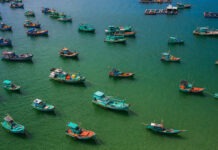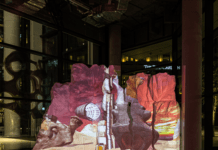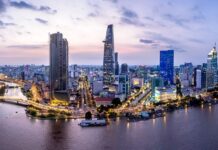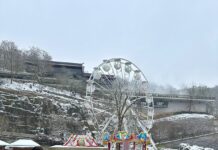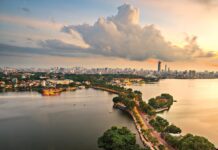Namanga, the second largest city in Uzbekistan, is one of the cities of the Ferghana Valley. According to history, the settlement was established on the border of the Ferghana Valley, where nomadic herders and farmers lived. Officially the city’s history began in the year 1610, when a settlement was founded at the place named ‘Namak-kan’, meaning ‘salt pit’ in Tajik. It is located next to a large lake where salt was mined near the stone bridge over the Namangansay.
The city developed rapidly and allowed a culture where great minds thrived, including many well-known philosophers, scientists and poets of the East, such as Lutfulloh, Firdausi, Babur and Mashrab.
At the beginning of the 18th century Namangan became the part of Kokand Khanate. A huge milestone in the development of Namangan and its agricultural surroundings was the construction of Yangiaryk channel in 1818-1821. At this time, there was a rise in urban artisans, and the growth of trading with China, Bukhara and the surrounding tribes of nomads. Sericulture, agriculture and horticulture were among the various developments in the region.
And yet, the years when Namangan was part of the Kokand Khanate, were not the best in its history. Endless internecine wars by the rulers undermined the economy, which led to the impoverishment of the population. In July 1875, a popular revolution broke out against the last of the Kokand ruler named Hudoyarkhan. Fleeing to Tashkent, under the protection of Russian arms, Hudoyarkhan provoked a military expedition of the Russian army deep into the Kokand Khanate up to Namangan town. In 1876, the era of Kokand Khanate ended and Namangan became the administrative center for five county areas.

After joining Russia, Namangan city, within a short time, flourished into a major industrial center of Turkestan. With the independence of the Republic of Uzbekistan, a lot has changed in the city and its connected surrounding areas. These days, it is a dynamically developing industrial region, with major economic sectors in silk, cotton processing, and chemical industry, as well as a thriving tourist and handicrafts industry.
Below are the most beautiful monuments dedicated to the rich, cultural heritage of Namangan.
Madrassah of Mullah-Kyrgyz: This Madrassah was built downtown in the early 20th century under the leadership of a talented architect named Usto Kyrgyz. Many legends are associated with the talent of the architect.
Madrasah is an irregular pentahedron surrounded by khujdras, which was due to the topography of the land. Covered with domes, the mosques and darshona were constructed to be built together, that breaks a little the symmetry of the main facade, which is also decorated with a portal-domed entrance. Inside the structure is a small minaret. The architecture of the main facade emphasizes the lancet arcade, which also highlights a clear rhythm of hujras. The portal is decorated in mosaics of blue, green, white and yellow flowers.

Mosque of Ota Valihon Tour: This Mosque features interesting architectural designs and was built in the early 20th century near the Madrassah of Mullah-Kyrgyz. The mosque is a rectangular building with a small entrance portal decorated with three-quarter towers. The central hall is blocked by a large ribbed dome 13.5 meters in diameter. The entrance gate is decorated with carved star-shaped figure, where a winding floral motif is placed. Cylindrical drums outside the mosque contains monumental inscriptions of Arabic ligature while strips of blue mosaics enhance the artistic effect of the building.
Mausoleum of Khoja Amin Cabri: This symmetrical portal-domed mosque is a famous memorial monument of the 18th century that is open from four sides. This building is located just to the south of burial that is marked by a rectangular gravestone. The general composition of the mosque speaks of a tremendous sense of proportions and it has quite eye-catching elements. Architect Usta Muhammad Ibrahim observed the best traditions of the local architecture to create this beautiful monument. A little later, an ensemble that includes a mosque, hanaka, quince and Madrassah, was built alongside it.

Ruins of Aksikent: Namangan’s most interesting site is outside the actual city. Some 22km to the southwest near Shokhand kishlak are the ruins of Aksikent, a fortified city at the confluence of the Kasansai and Syr Darya rivers.
Climb to the top of the site where a modern pylon stands incongruously atop a sweeping man-made mound of earth. This was once the center of the fort and, as the Emperor Babur recorded in his memoirs, the Baburnama, the suburbs of Aksikent stretched out from here to 3km in each direction. Looking down the steep drop to the row of plain trees alongside the river, you can clearly see the strategic value of this site: it is a spot that is easy to defend, and you could see enemies advancing from any direction.
Although initially the earthen mounds around you look just like arid humps, if you look closely you will be able to differentiate between the underlying earthworks and the stocky mud-brick walls. Millions of bricks, each one made by hand, comprised walls more than 2 meters thick; it is little surprise that it took Li Guanli’s forces so long to break inside.

Ferghana Valley: From this broad (22,000 sq km), flat bowl, the surrounding mountain ranges (Tian Shan to the north and the Pamir Alay to the south) seem to stand back at enormous distances. Drained by the upper Syr-Darya, the Fergana Valley has the finest soil and climate in Central Asia.
It is Uzbekistan’s most populous and its most industrial region, as well as the country’s fruit and cotton basket, meaning it has long wielded a large share of Uzbekistan’s political, economic and religious influence. Throughout history, Fergana Valley has been the object of many territorial battles and its various areas have been occupied by the Achaemenid Empire, the Han Dynasty, the Bactrian Empire and the Samanids. Today it stretches across three former Soviet states, from eastern Uzbekistan through Kyrgyzstan to Tajikistan. As such, it is an area of incomparable cultural and ethnic diversity as well as historical and environmental interest. From cities with stunning architecture to breathtaking scenery to fabulous handmade silks and ceramics, a visit to Fergana Valley is sure to intrigue the intrepid explorer.
Juma Mosque, Kokand: In the city of Kokand stands the beautiful 19th century Juma Mosque. Its colorful minaret with arched portico stretches up more than twenty meters, supported by giant columns made from Indian redwood trees. Today, visitors can enjoy a tour of this mosque-museum, which includes historical artifacts from the city of Kokand and surrounding area.
Khan Palace, Kokand: Khudoyar Khan commissioned this elaborate and stunning architectural marvel in the 19th century to house himself and his family. They were able to enjoy its opulence for just two years before the Russians invaded Kokand and the Khanate fell. The palace boasts seven courtyards and 113 rooms, of which twelve are open to visitors today.
Pottery of Rishtan: The small town of Rishtan is famous around the world for its ceramics due to the high quality clay upon which it is built. In workshops throughout the city, traditional techniques and machinery are used by master craftsmen to produce beautiful, elaborate patterns and the distinctive blue-green glazed pottery which can be bought in the town’s bazaars and markets.
Blue Lake of Shahimardan: To the south of the Fergana Valley lies the enclave of Shahimardan, in the hills of the Allai Mountains. This town is a shrine to Caliph Hazrat Ali and a popular spot for tourists and pilgrims who take the cable car from the center of town up to Kurbal Kul, a stunning blue alpine lake, set peacefully amidst the mountain peaks.

Yodgorlik Silk Factory, Margilan: Owing to its position on the Silk Road, silk production has long been a crucial enterprise and source of economy in the Fergana Valley. A visit to the Yodgorlik silk workshop reveals every step of the painstaking process involved in producing the beautiful handmade material, from the filament, which is spun, dyed and finally woven or knotted into yards of gorgeous silk.








